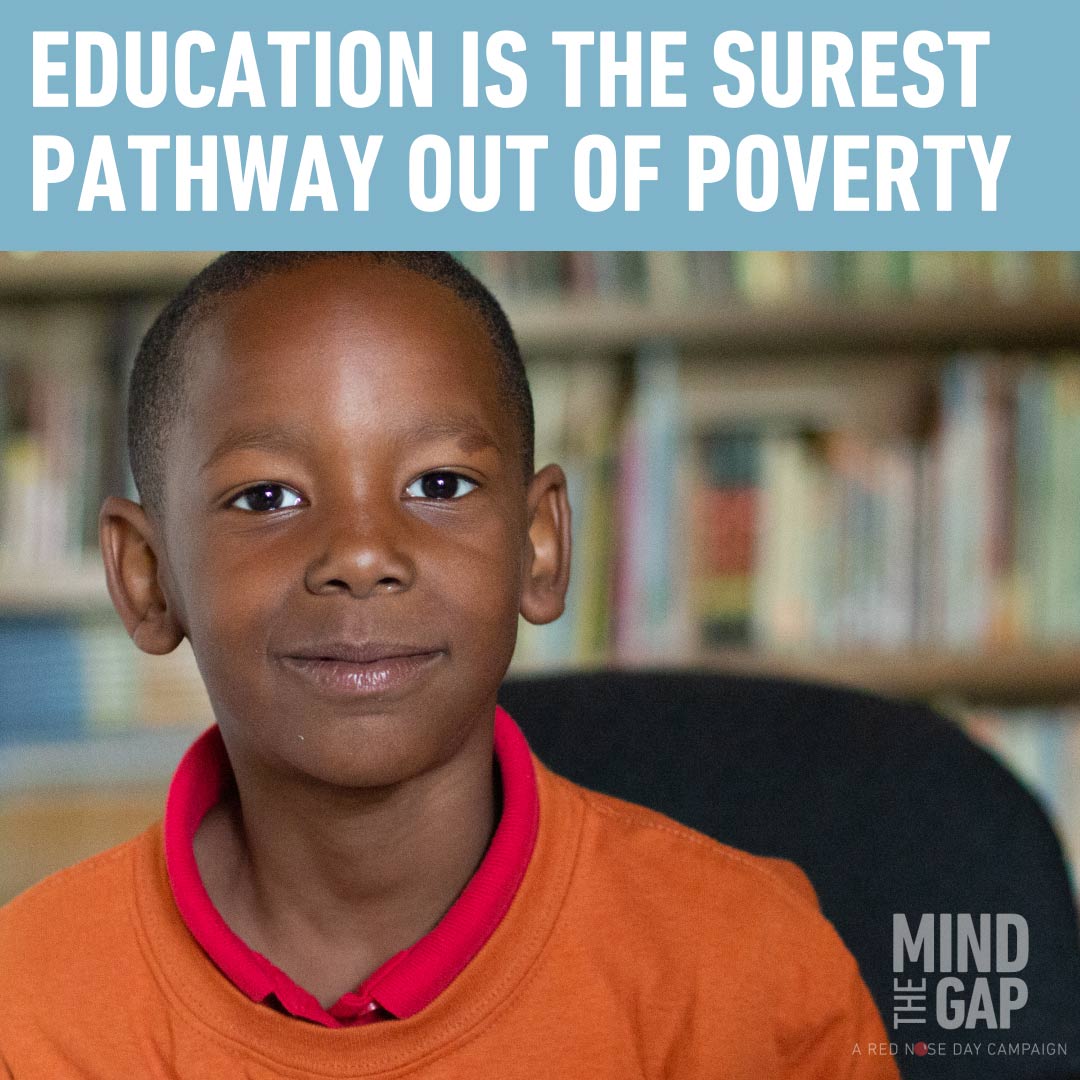
Join the Community Builders Challenge, a NEW hands-on SEL learning experience that combines creativity and compassion to inspire students across the country to build a better world.
Learn MoreRed Nose Day has long funded programs that help ensure students living in poverty get a quality education and all the tools they need to succeed. Today, this support is more critical than ever.
For children and families facing poverty, COVID-19’s impact on their education could have a lasting impact. Even without a pandemic, these students experience a learning gap driven by differences in access – to quality schools, stable learning environments, technology, and resources.
Now, COVID-19 has disrupted education and made the learning gap even wider.
,Learn our 5 facts about the learning gap, and what you can do to help:
#1: Education is the Surest Way Out of Poverty

According to a United Nations study, the global poverty rate could be more than halved if all adults completed secondary school. They report that education has direct and indirect impacts on both economic growth and poverty. When someone is able to complete their education, they’re more likely to be employed, contribute to the economy, and even live longer.
Education is the great equalizer. But unfortunately, for millions of kids around the world living in poverty, they face barriers to getting an education.
#2: COVID-19 has disrupted education around the world

COVID-19 school closures have impacted over 1.5 billion children global. For many students, this means moving classes online. Millions of students rely on school not only to get a quality education, but also consistent meals, a safe place to be, and opportunities for economic mobility and advancement.
The impacts of being out of school for these students could last a lifetime.
#3: Many students from low-income schools lack adequate access to technology and the digital resources they need to succeed

Even before the pandemic, about 12 million children in the US lacked access to the internet, and around 1 in 5 teens said not having reliable access to the internet or a computer disrupted their ability to complete homework sometimes or often.
#4: Lack of access to the internet and digital resources is making the learning gap even wider

Since schools went virtual in March, the digital access divide has only grown wider, leaving millions of low-income children even more at risk of falling behind. Although reopening plans for schools vary greatly by state, one thing is certain: for children facing poverty, this crisis puts the surest pathway out of poverty – a quality education – at risk. Red Nose Day in School is helping fill the learning gap by providing free, downloadable virtual learning resources such as teaching empathy activities and more.
#5: By donating, you can help close the gap

We believe education is essential, and Red Nose Day has long funded programs that help bridge the gap for students living in poverty, ensuring they get a quality education and all the tools they need to succeed. Now, especially during the pandemic, this work is more critical than ever.
Just $5 can support one day of virtual learning for a child from an under-resourced school.
$50 can provide books, supplies and activities remotely to help seven children keep reading skills sharp and prevent learning loss.
Ready to stand up for students everywhere?


.jpg)


